“Making rosé is about extracting fruit and colour, not tannin,” says Ruinart chef de cave, Frédéric Panaïotis In this endeavour he likens the Pinot Noir he is after to Gamay.
Champagne launches are usually well-orchestrated marketing exercises where the new wine is tasted, explained and contrasted with previous iterations or vintages of the cuvée; they can be neat, informative affairs where a more or less honed corporate image is projected. But while Ruinart Maison is corporate, part of the big LVMH luxury stable, a launch with a chef de cave as articulate, curious and open-minded as Frédéric Panaïotis naturally is a wonderfully rambling affair – and no less informative. But something different happened: the wines absolutely stole the show and stopped me in my tracks.

The special thing about the Dom Ruinart Rosé is that it is a blend of a large proportion of Chardonnay and Pinot Noir vinified as red. There is no addition of white-vinified Pinot Noir.
Champagne lovers familiar with the house will know that Ruinart prizes the freshness of Chardonnay and has made it the backbone of its cuvées; that Ruinart was the first Champagne house to have made and sold rosé wine in 1764. So much for corporate image and message. Panaïotis recounts conversations with Ruinart’s old director, Bertrand Mure, who ran the house since 1946 and who still came into work regularly when Panaïotis started in 2007.
“He told me, Frédéric, for me Champagne is about drinking from nine in the morning until nine the next morning and with Chardonnay I can achieve this,” Panaïotis recalls. “For Mure, Champagne was about celebration, about having people drinking it any time of day or night. In 1946 this was visionary,” Panaïotis says, reminding us that even villages like Villers-Marmery and Vertus were then largely planted to Pinot Noir. “That is how it started, the story of Ruinart and Chardonnay. With nearly 300 years of history it seems like a short period, but we are one of the houses who started working deeply with Chardonnay.”
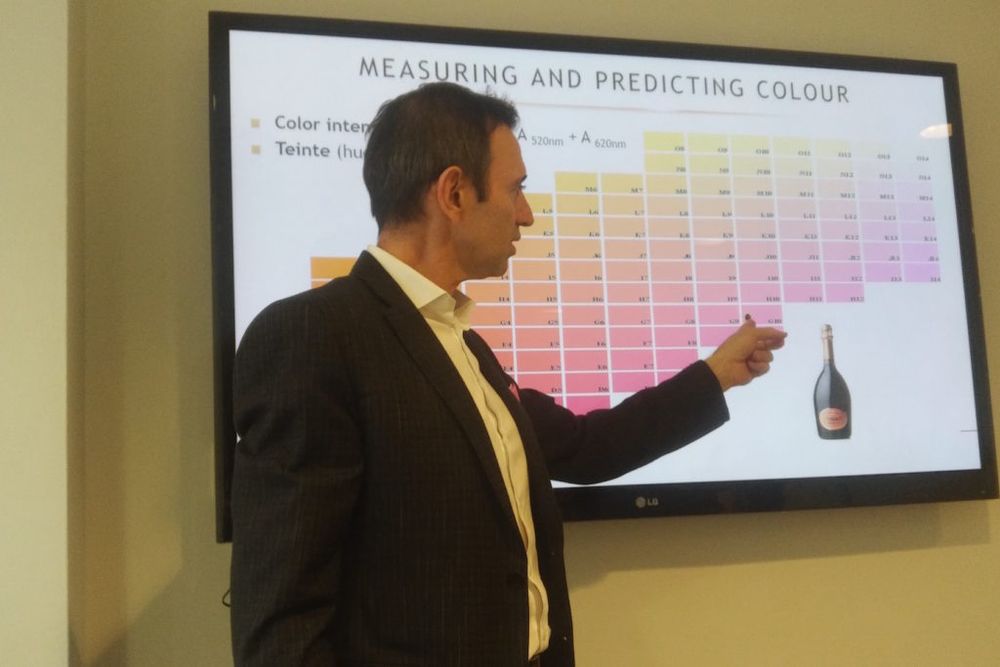
Frédéric Panaïotis explains about all the scientific trials that are conducted to determine colour stability in Ruinart Rosé and how they differ for the non-vintage and vintage wines. London, November 5, 2019
As the 2007 Dom Ruinart Blanc de Blancs was poured, Panaïotis mused about the vintage and noted that “you probably have different echoes of 2007. The years people speak well about in Champagne are usually the years where black grapes do better, in years where the whites do better you don’t hear so much about it. There have been years where there clearly were successes for Pinot Noir, and successes for Chardonnay – and they were not necessarily the same years. 2007 was definitely a year for Chardonnay. I think, every serious Blanc de Blancs producer has made a vintage Blanc de Blancs and nobody complains. For 2007 the winter and spring were quite good, spring was quite warm and sunny, the summer was not so pleasant, it was overcast, there was some rain. But despite the clouds the maturation process did not slow down.”
When it comes to harvesting Chardonnay, Panaïotis notes that there is a “strict protocol”, a systematic way of tasting grapes in order to determine harvest.
“We are taking 400 berries of each block, within a certain distance, we are ten people tasting 12 berries per person, pulp first, skins second,” he explains. This is done blind. Panaïotis notes that there are four stages of ripeness in Chardonnay: “We have the green phase that even has herbal and vegetal notes which is too early. Then we have green citrus fruit like lime as the second stage; then ripe citrus, then stone fruit. These are the four phases. In 2007, we were between green and ripe citrus, which is what we are looking for, our sweet spot.”
He also says that “acidity is only one vision of what the freshness is. In Champagne, even in warm years, we are in territory where lack of acidity is not a problem,” noting the low pH levels of musts even in a hot year like 2018. All this prompted discussions about defining ripeness, capturing a certain flavour profile at harvest and, of course, about climate change – and what freshness and acidity actually means – a hot topic in Champagne right now. But Panaïotis brings us right back to the wine: all base wines undergo full malo-lactic fermentation. “Malo is more of a textural, aromatic thing as well,” he notes. “We like purity and yet, from nine a.m. to nine a.m.– malo is mandatory, it really helps this mouth-watering feeling, it is soft without being flabby.”
Clearly, malo-lactic fermentation is a key concept: “Temperature is an important factor, when you inoculate, when you rack, the strain, the marriage between the yeast and the batercia is very important. This is all about avoiding diacetyl,” he says, that aroma of melted butter.
Dom Ruinart Blanc de Blancs 2007
Made from 100% Chardonnay of which approximately 75% are from the Côte des Blancs (Chouilly, Mesnil, Avize and some Oger) and 25% from the Montagne de Reims (mostly Sillery). Dosage 7.5g/l disgorged November 2017.
The creamy, rounded nose is still tinged with a slight edge of reduction that acts like a salty sea breeze. With air, a lovely chalkiness starts shining through, with faint but aromatic hints of sun-warmed hay and ripe Amalfi lemon peel. The palate, with very fine, creamy bubbles, is fluid but concentrated, almost incisive, flitting between drive and gentleness, energy and emollience. Wonderful with a gorgeous creamy-fresh finish.
RRP £155 at Clos19, Jeroboams, The Finest Bubble, Berry Bros & Rudd
To tune our palates to the pink sparklers, Panaïotis has brought his popular and iconic Ruinart Rosé:
Ruinart Rosé NV
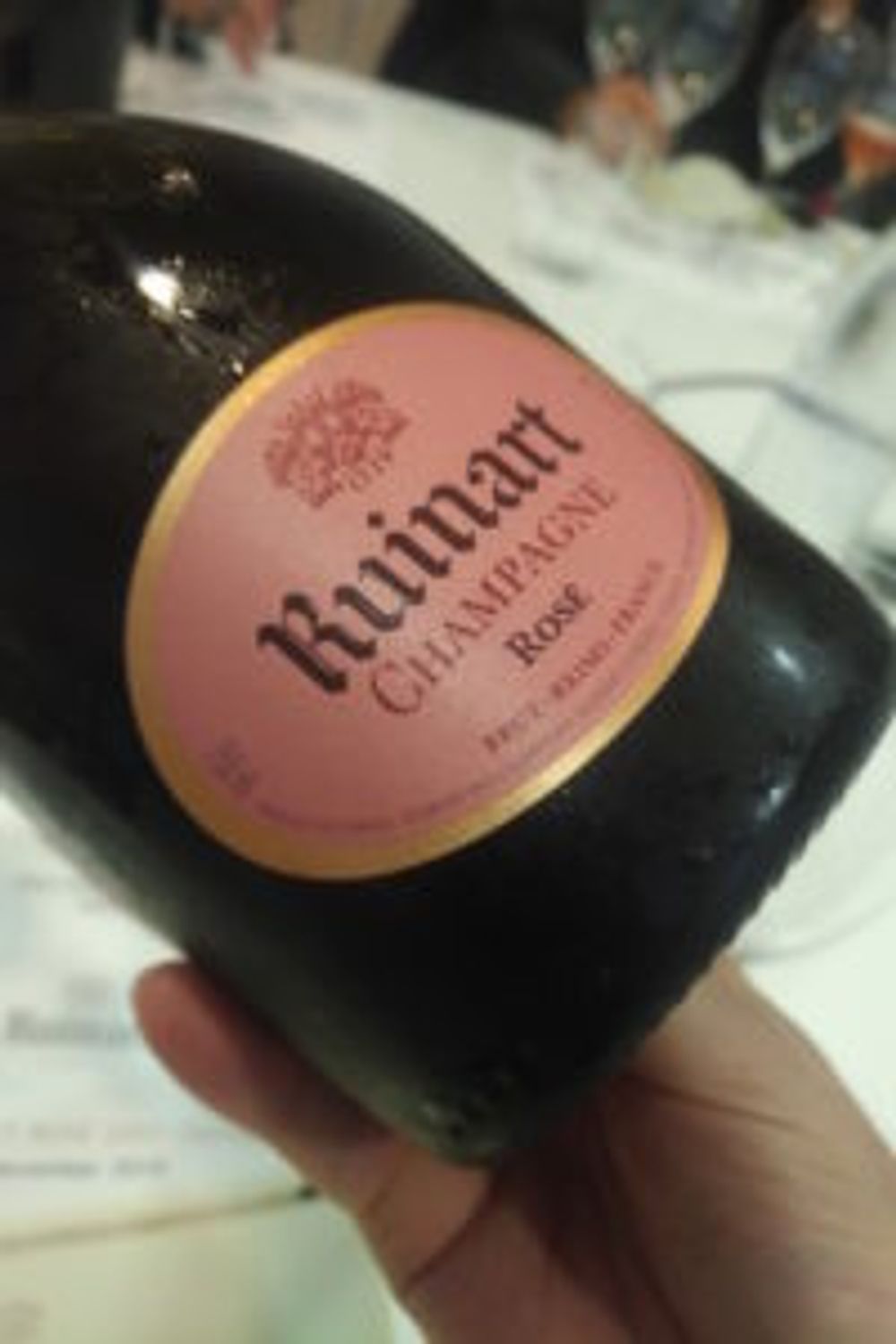
Based on the 2016 harvest, 45% Chardonnay, 55% Pinot Noir of which 16% were red wines. 8g/l dosage
On the nose an exquisite, almost primary hint of summer pudding berries: tart, tender, aromatic. With more air, there is almost a whiff of Amarena. The palate is bright, fresh, vivid, crisp and mouth-watering, reverberating with freshness, echoing with the tender fruit, but finishing in charming, fresh, creaminess. Wonderfully elegant.
RRP £65 at Clos19, Majestic, Jeroboams, The Finest Bubble, Lea & Sandeman, Berry Bros & Rudd
At this point, out of the blue, Panaïotis says abruptly: “This is not fizzy enough.” He grabs a pen-sized implement from his suit pocket and, while the Champagne is still in his glass, uses it in screeching fashion to scrape tiny, rough nucleation points into the bottom of his glass (Ruinart’s glasses are modelled on Philippe Jamesse’s brilliant ‘Grande Champagne’ – my favourites) and the wine promptly starts sending up a lively stream of bubbles.
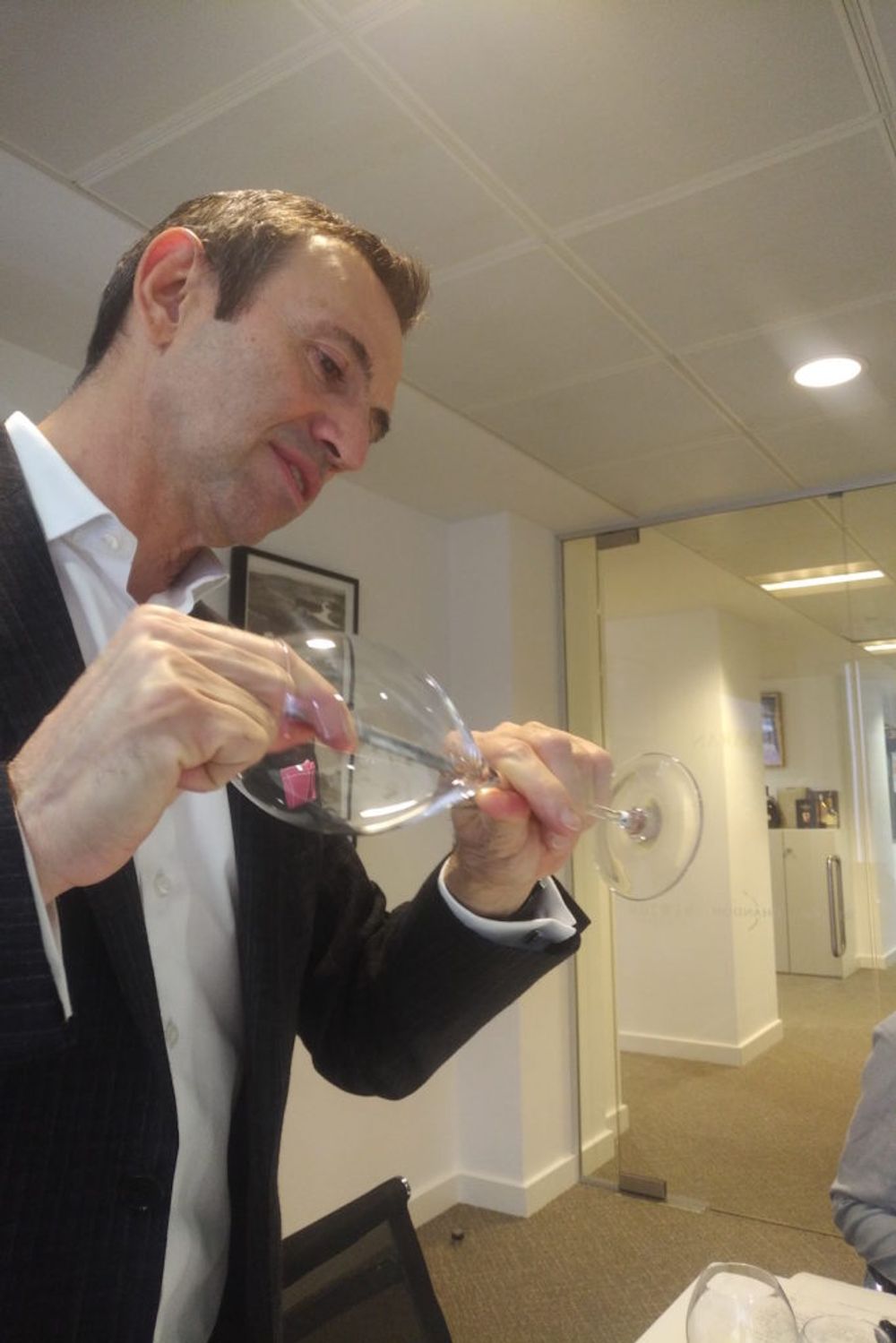
Perhaps this is a well-oiled Panaïotis party trick, but it certainly worked its effect. This prompted Panaïotis to talk about the physical properties of the bubbles themselves and how they promote aromatic intensity, airing his familiarity with the works of Champenois researcher Gérard Liger-Belair.
Then Dom Ruinart Rosé 2007 was poured and he started speaking about the colour intensity, the trajectory of colour and its stability and all the scientific trials that are conducted to determine colour stability in Ruinart Rosé and how they differ for the non-vintage and vintage wines. He even pulled up colour charts from his laptop to show what findings they had made in his lab.
The special thing about the Dom Ruinart Rosé is that it is a blend of a large proportion of Chardonnay and Pinot Noir vinified as red. There is no addition of white-vinified Pinot Noir. Of course Panaïotis also spoke about the aims of vinifying red wine whose destination is Champagne: “We want to extract the anthocyanins, the shorter molecules of phenolics. Making rosé is about extracting fruit and colour, not tannin.” In this endeavour he likens the Pinot Noir he is after to Gamay.
After that, I am afraid, my entire attention was captured by the following three Dom Ruinart vintages, the 2004 providing a particularly delicious and memorable experience.
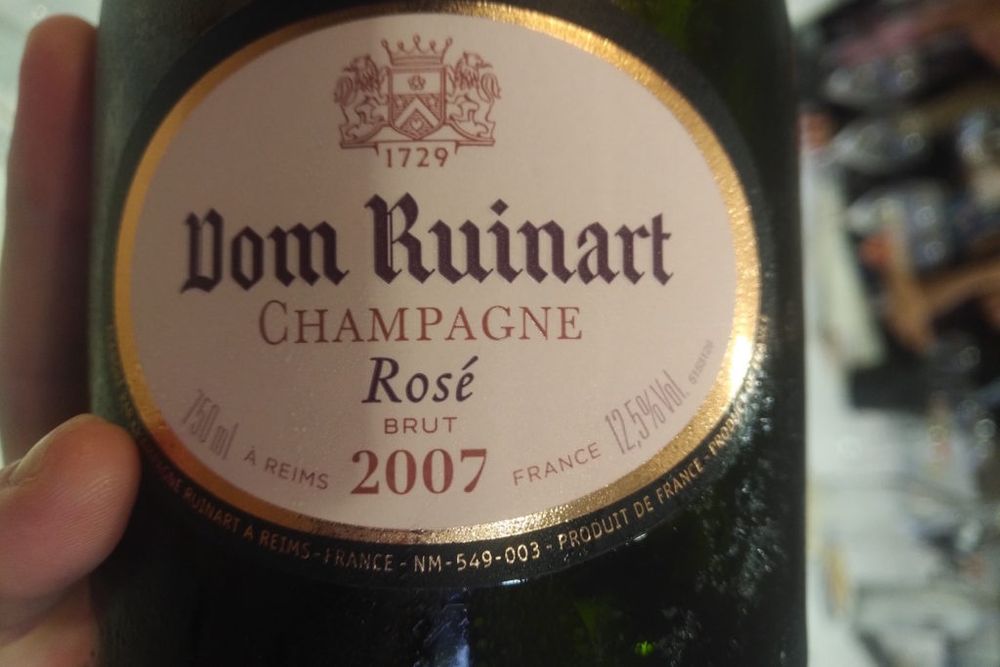
Dom Ruinart Rosé 2007
80% of the exact base of the 2007 Dom Ruinart Blanc de Blancs plus 20% of Pinot Noir from Aÿ, vinified as red. Disgorged February 2018, dosage 5 g/l.
A lovely rose gold hue suggests some evolution. A lovely lifted, evolving nose that suggests tisane of rosehip and lovely hints of blood orange. The exquisite slender, incisiveness is there. Again this is bedded in softness, suggesting wonderful, almost autumnal depth of rosehip, and a flurry of tender, softly scented rose petals. More air reveals a spiciness found in Medjool dates. Autolysis is creamy rather than biscuity, the texture is scented with gentle red fruit while the tiniest bubbles, the finest mousse lends gentle touch. This all tapers towards a bright and creamy citrus finish.
RRP £230 at Clos19, Jeroboams, The Finest Bubble, Berry Bros & Rudd
“Remember, it was a difficult year for Pinot Noir,” Panaïotis says. “we haversted the Pinot Noir just before the rain, we had to be smart. These vineyards have lower yields, they ripen earlier, they had 11% abv, and we made some very good red wine. We macerated for 8-10 days, we went higher in fermentation temperature to about 28C. We have to respect the Chardonnay in the blend, so it needs to be elegant and soft. When people look at rosé they forget the white element, the evolution of gold and the evolution of red.”
What a boon to have the Dom Ruinart Blanc de Blancs 2007 – which constitutes 80% of that rosé for comparison – and to see what difference the 20% of red wine did to shake its flavour kaleidoscope into a very different but equally delicious picture. Its incisiveness was tamed, its emollience enhanced.
Then came the star turn – the 2004 – which might give us an idea into what direction 2007 might travel with more bottle age:
Dom Ruinart Rosé 2004
81% Chardonnay plus 19% of Pinot Noir from Sillery vinified as red. Disg. February 2016, dosage 4 /l.
A touch of creamy, tart citrus freshness, then a cloud of ripest, most aromatic Tarocco orange fillets. This has a heart of exquisite freshness from which the finest, tiniest bubbles emanate in a stream of tender brightness, sending scented signals of that blood orange flavoured, powdery, bone-dry creaminess. Like a silky, warming but exciting embrace. With more air its slender roundness was enhanced to reveal autumnal generosity, a suspicion of nutmeg and dried blood orange peel. A bracingly clean, creamy finish. This is fresh, pristine, vivid, creamiest elegance with mouth- and mind-filling length. Whatever this wine had, it had it in spades. Wow.
RRP £230 at Clos19, Jeroboams, The Finest Bubble, Berry Bros & Rudd
This was a hard act to follow. In my view it was not surpassed, but the 1990 showed wonderful evolution and reminded me that wine will remain a delicious mystery forever. As much as I share Panaïotis’ – and Champagne’s – scientific endeavour. The most beautiful thing is that understanding does not dim pleasure – on the contrary, it enhances it. Long live curiosity.
Dom Ruinart Rosé 1990 in magnum
83% Chardonnay, 17% Pinot Noir as red wine. Disgorged May 2005, dosage, 10g/l
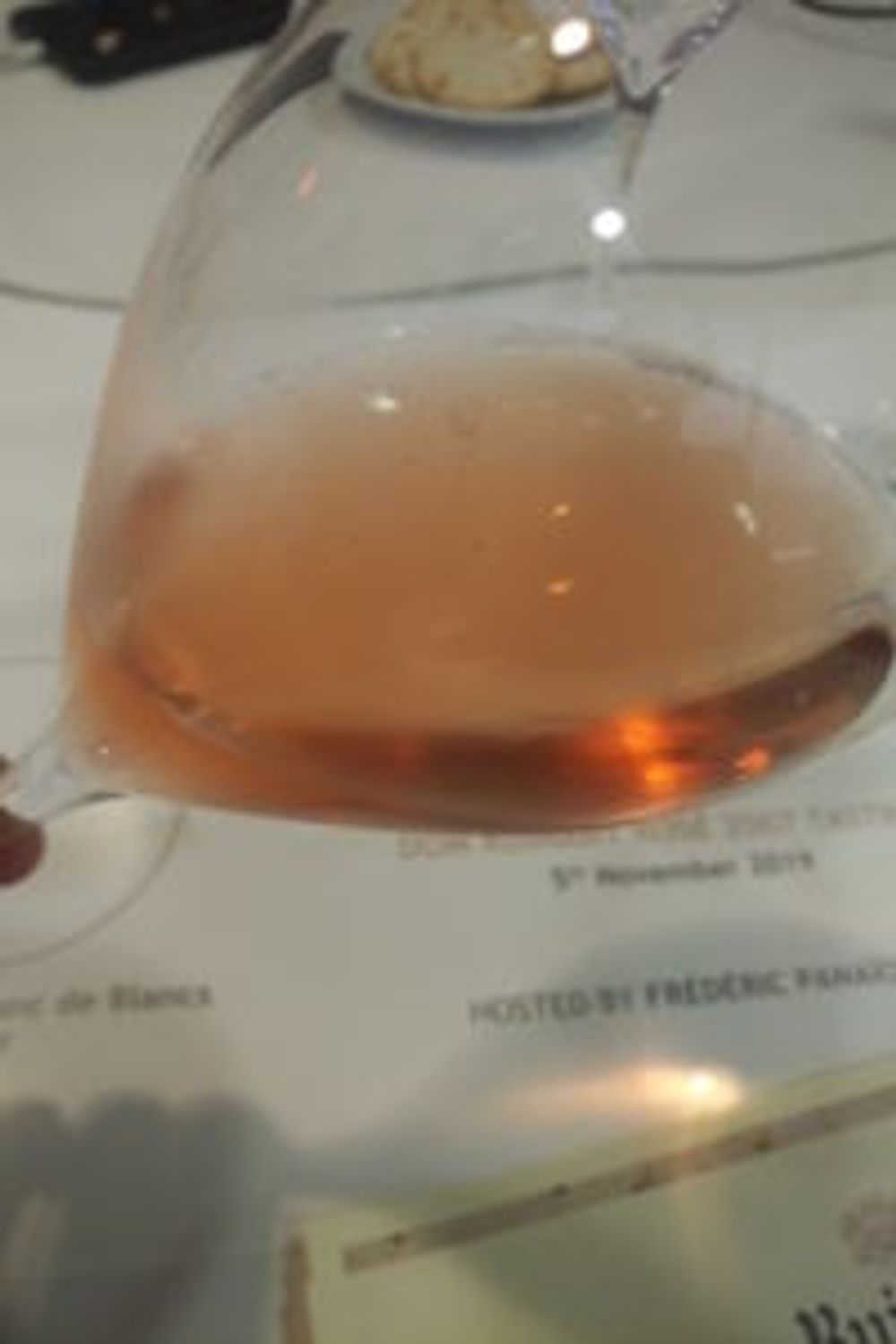
Wonderful lift of oak leaf, suede leather and dried porcini mushroom. With air, a glow of fuzzy peach skin comes through along with dried peach. On the creamy palate, the porcini earthiness and the suede leather grip now and provide a backdrop for flashes of that gorgeous blood orange character. A central vein of purity illuminates the entire palate while that earthy, sonorous depth draws you deeper and deeper. A wonderful, transporting experience revealing glimpses of the secrets that hide within those grapes.









































